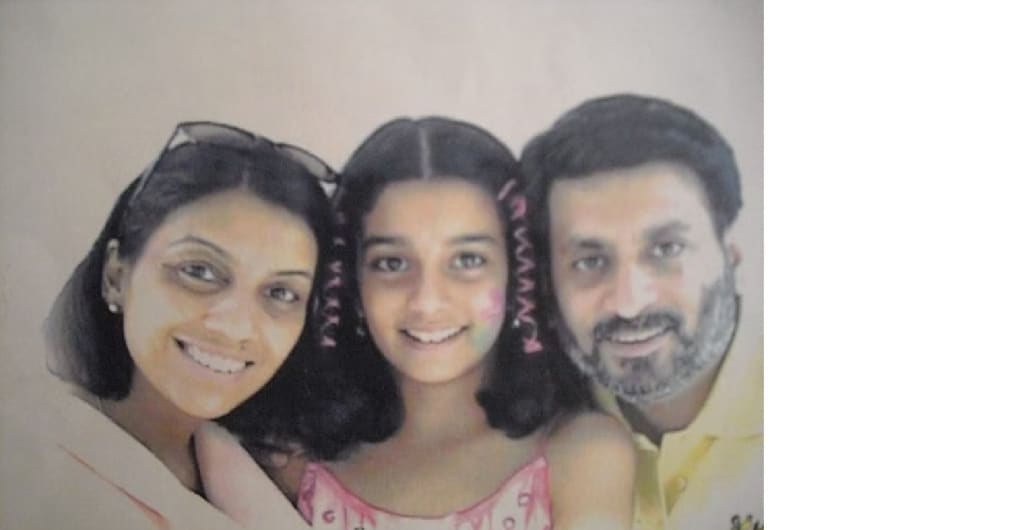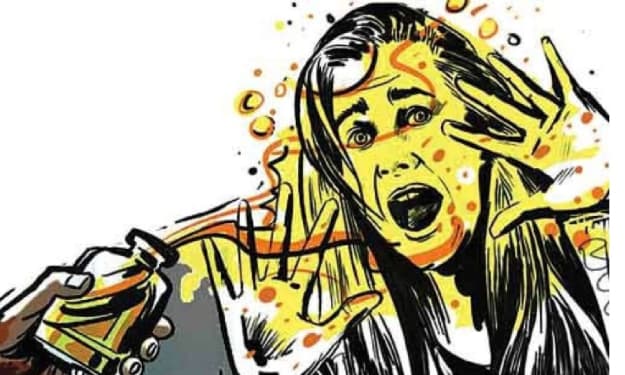Content warning
This story may contain sensitive material or discuss topics that some readers may find distressing. Reader discretion is advised. The views and opinions expressed in this story are those of the author and do not necessarily reflect the official policy or position of Vocal.
The Aarushi Talwar Murder Case
The Grisly Double Murder That Shook a Nation and the Chilling Quest for Justice

The Aarushi Talwar murder case is one of India's most controversial and perplexing criminal cases. It has captivated the nation’s attention with its blend of high-profile victims, sensational media coverage, and a labyrinthine investigation. This article delves into the key events, investigation, and trials surrounding the gruesome double murders of 14-year-old Aarushi Talwar and domestic servant Hemraj Banjade in 2008.
The Horrific Crime
On the morning of May 16, 2008, the Talwar residence in Noida, a city adjacent to the Indian capital of New Delhi, became the scene of a grisly discovery. Aarushi Talwar, a teenage girl from a well-to-do family, was found dead in her bedroom. Her throat had been viciously slit, almost decapitating her, and she had suffered a brutal blow to the head. The savagery of the crime shocked the nation. Initially, suspicion fell on Hemraj Banjade, the Talwar family's live-in domestic worker, who was missing at the time.
However, the case took an even darker turn the following day. Hemraj's decomposing body was discovered on the terrace of the Talwar residence, hidden under a cooler panel. His throat had been slit in a similarly brutal fashion, and he, too, had suffered blunt force trauma to the head. The sheer brutality of the murders sent chills through the community and gripped the nation with fear and intrigue.
Initial Investigation and Missteps
The Noida police faced immediate criticism for their bungled handling of the crime scene. Journalists, neighbors, and onlookers trampled through the apartment, contaminating crucial evidence. Early theories suggested a botched robbery, but these were quickly dismissed due to the lack of supporting evidence. As public pressure mounted and the media frenzy escalated, the Uttar Pradesh Police handed over the investigation to the Central Bureau of Investigation (CBI), India’s premier investigative agency.
Suspicion and Arrests
Attention soon shifted to Aarushi’s parents, Dr. Rajesh Talwar and Dr. Nupur Talwar, both successful dentists. The CBI’s first team, led by Arun Kumar, initially suggested that the murders were committed by an outsider, likely someone known to the victims, driven by a personal vendetta. However, due to a lack of conclusive evidence, the investigation stalled, and the case was handed over to another team within the CBI.
This second team proposed a different, more sinister theory: the parents themselves were the prime suspects. The CBI's case was largely circumstantial, hinging on the controversial "honor killing" angle. They posited that the parents had killed Aarushi after finding her in a compromising position with Hemraj. The Talwars were arrested, and the media speculation spiraled out of control, with lurid details and unverified claims making headlines daily. However, this theory was met with significant criticism for its lack of solid evidence and perceived bias.
The Trial
The trial began in 2012, with the prosecution presenting the case against the Talwars based on circumstantial evidence. They painted a gruesome picture of a family tragedy rooted in rage and a twisted sense of honor. The defense argued that the evidence was flimsy and highlighted numerous inconsistencies and procedural lapses in the investigation. The lack of forensic evidence linking the Talwars directly to the crime, mishandling of evidence, and the botched initial investigation were central to the defense's arguments.
Despite these contentions, in November 2013, a special CBI court convicted the Talwars of murder, destruction of evidence, and other charges, sentencing them to life imprisonment. The judgment was met with widespread surprise and skepticism, given the contentious nature of the evidence and the glaring flaws in the investigation.
Public and Media Reaction
The Aarushi Talwar murder case became a media sensation, with extensive coverage that often bordered on sensationalism. The case was dissected in television debates, print media, and online forums, sometimes in a manner that was seen as intrusive and speculative. The intense media scrutiny influenced public perception, creating a polarized environment where opinions about the guilt or innocence of the Talwars varied widely.
The portrayal of the Talwars in the media raised serious questions about privacy and ethical journalism, as many felt that the couple was being tried by the media even before the legal process had concluded. The case became a textbook example of how media coverage can shape public opinion and potentially impact the judicial process.
Appeals and Acquittal
The Talwars appealed their conviction, and in October 2017, the Allahabad High Court acquitted them, citing a lack of evidence and faulting the CBI for failing to prove beyond reasonable doubt that the Talwars were guilty. The High Court highlighted the numerous investigative flaws, including the destruction and contamination of evidence, and the reliance on unsubstantiated theories.
The acquittal was a significant moment in the case, reaffirming the principle that guilt must be proven beyond reasonable doubt and underscoring the importance of a robust and fair investigation. The Talwars were released from prison after spending nearly four years behind bars, and their acquittal was seen as a vindication for those who believed in their innocence.
The Legacy
The Aarushi Talwar murder case remains a haunting chapter in India's criminal justice history. It exposed the vulnerabilities in the country's investigative and judicial processes and highlighted the immense pressure that high-profile cases place on law enforcement agencies. The case also served as a cautionary tale about the impact of media on justice, emphasizing the need for responsible and balanced reporting.
For the Talwars, the case was a personal tragedy compounded by the public ordeal of being accused and convicted of their daughter's murder. Their experience has sparked discussions about the need for reforms in the criminal justice system, including better training for police, more rigorous forensic standards, and safeguards against wrongful convictions.
Conclusion
The Aarushi Talwar murder case is a stark reminder of the complexities and challenges inherent in the pursuit of justice. It underscores the critical need for meticulous and unbiased investigations, the protection of individual rights, and the role of a fair trial in ensuring that justice is not only done but is seen to be done. The case will likely continue to be studied and debated for years to come, serving as a significant reference point in discussions about law, media, and society in India.
About the Creator
SaurabhK
I am a versatile writer passionate about crafting gripping crime fiction and insightful real crime articles. 🕵️♂️📖 I also explore culinary delights, uncovering flavorful experiences that celebrate the artistry of chefs. 🍽️🍷
Enjoyed the story? Support the Creator.
Subscribe for free to receive all their stories in your feed. You could also pledge your support or give them a one-off tip, letting them know you appreciate their work.






Comments
There are no comments for this story
Be the first to respond and start the conversation.